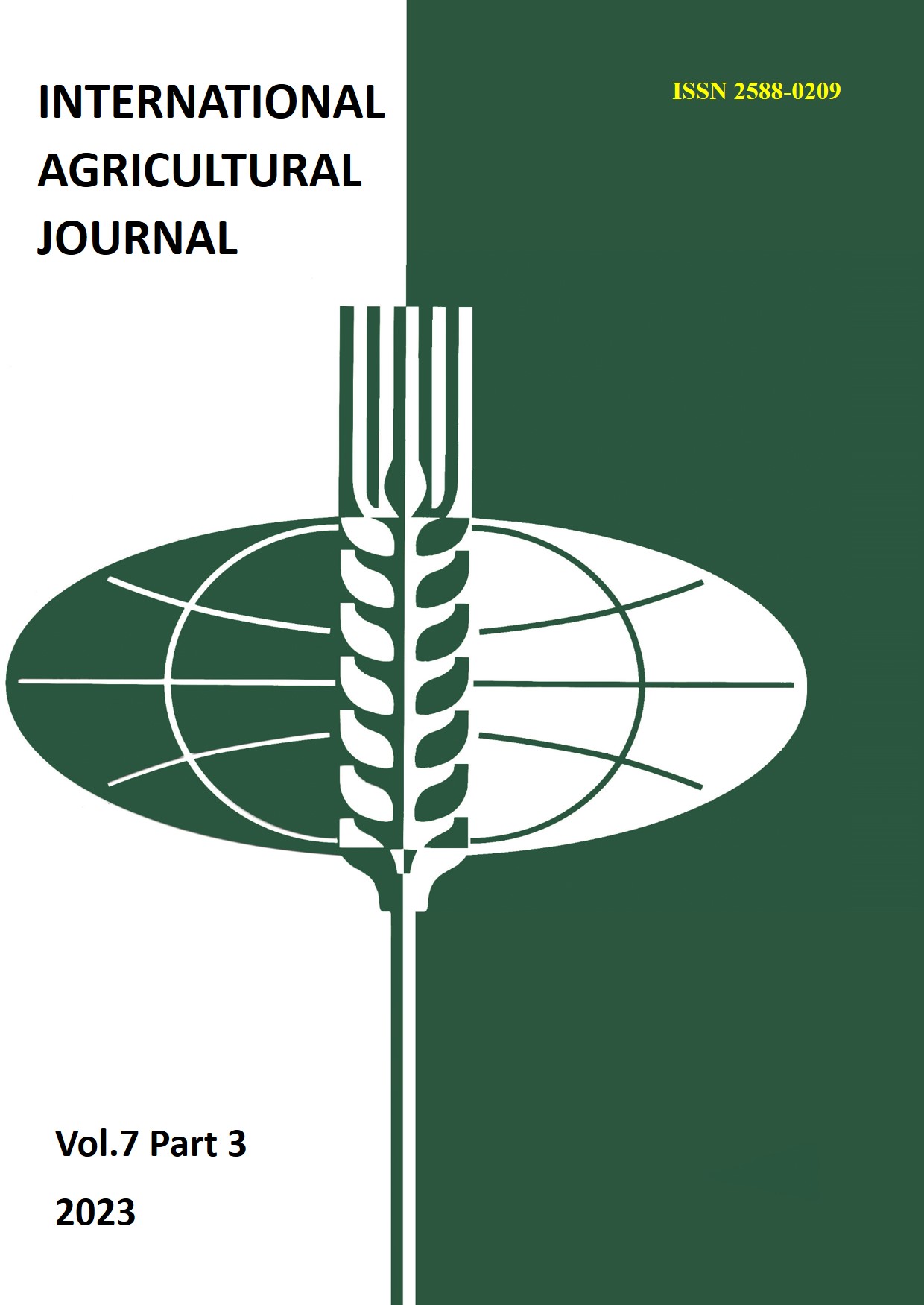TO STUDY EFFECTIVE METHODS OF CREATING SEEDED GRASS STANDS WITH ESTUARY IRRIGATION IN THE ALASNY MEADOWS OF YAKUTIA
Main Article Content
Abstract
The article deals with the creation of seeded cereal and legume-cereal grass stands with estuary irrigation in alasny meadows with haymaking use. Estuary irrigation is considered to be a constant source of green fodder and hay with low costs has been used for thousands of years, including the territories of arid areas. Flooding of estuaries from irrigation system channels guarantees annual irrigation and stable production of high yields of forage crops and meadow grasses. The use of local runoff in combination with the supply of irrigation water to flood estuaries with a shallow filling depth is the main feature of the development of estuary irrigation at the present stage. Measures to maximize the use of local water resources have an important role to play. In this regard, estuary irrigation is of great importance, being a significant reserve in increasing feed production. The article provides data on yield, botanical composition, feed quality, economic and agro-energy assessment of cereal and legume-grass stands. The research was carried out at the Liman research and production hospital on the basis of the feed production laboratory of the Yakut Research Institute of Agriculture in 2020-2022. The highest yield in the eighth year of haymaking use with estuary irrigation in the conditions of the Alas was formed by a cereal grass mixture of rump (10 kg / ha) + wheatgrass (8 kg / ha) – 2.6 t / ha SV, which is higher than the control by 1.4 t/ ha. The basis of the grass mixture in estuarine meadows was the boneless stalk (90.0%) of SV, the introduced types of natural grasses (8.0%) of SV. Of the cereal-legume grass mixtures, the highest yield (3.1 t/ha) of SV was provided by a three-component alfalfa mixture (8 kg/ha)+wheatgrass (8 kg/ha) + used rump (15 kg/ha). At the same time, the safety of alfalfa in the herbage is 44.0%, rump - 48.0%, introduced species 5.0%, weeds -3.0%.
Article Details
References
2. Evans, D. R. Effect of Fertilizers on the pure yild and sown white clover and on soil nutrient status / Evans D. R., Thomas T. A., Williams T. A., Davies W. E. // Grass and Forage Science. - 1986. - Vol. 41, № 4. - P. 295-302.
3. Banszki, T. Fertilisation of grasslands with various rations of legumes / Banszki T. // Acta Agronomica Academiae Scientiarum Hungaricae. - 1990. - Vol. 39, № 1/2. - P. 65-71.
4. Emel'yanova A.G., A.A. Soromotina, E.KH. Sivtseva. Mnogoletnie travy Prilenskogo i Lenno-Amginskogo agrolandshaftov Tsentral'noi Yakutii – Yakutsk: Dani-Almas. 2014.-188 s.
5. Sistema vedeniya sel'skogo khozyaistva v Respublike Sakha (Yakutiya) na period 2016-2020 gody / Metodicheskoe posobie. - Yakutskii NIISKH. - Yakutsk, 2017. – 415 s.
6. Metodika opytov na senokosakh i pastbishchakh [Tekst] – M., 1971. - CH. 2. – 174 s.
7. Metodicheskie ukazaniya po provedeniyu nauchnykh issledovanii na senokosakh i pastbishchakh [Tekst] - M., 1996. – 152 c.
8. Metodicheskoe rukovodstvo po otsenke potokov ehnergii lugovykh agroehkosistemakh / A.A. Kutuzova, L.S. Trofimova. – Moskva, 2007.- 38 s.
9. Mikhailichenko B.P., Kutuzova A.A., Novoselov YU.K. i dr. metodicheskoe posobie po agroehnergeticheskoi i ehkonomicheskoi otsenke tekhnologii i sistem kormoproizvodstva. M.: RASKHN, 1995. 173 s.
10. Dospekhov B.A. Metodika polevogo opyta. –M.: Kolos, 1985. – 347s.

